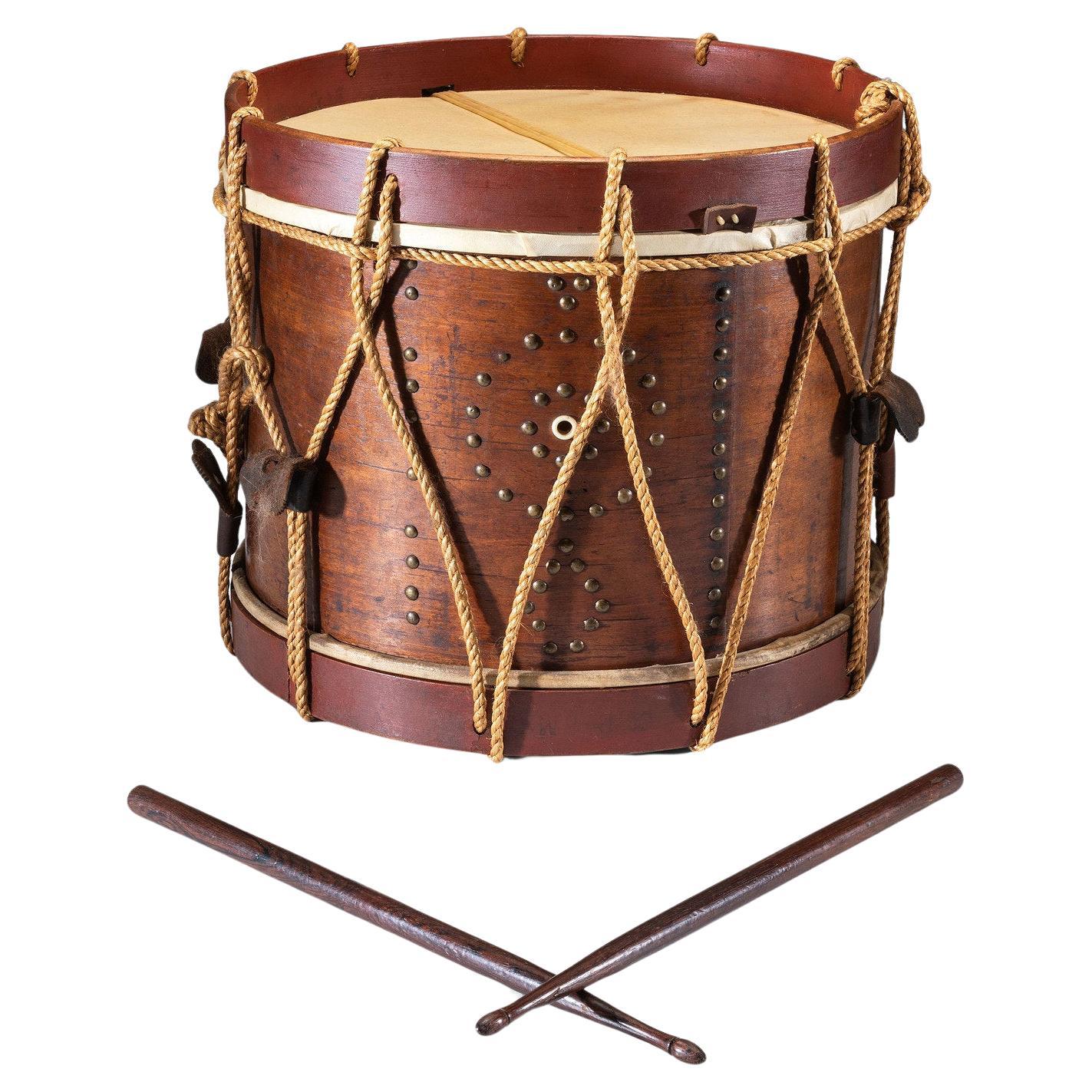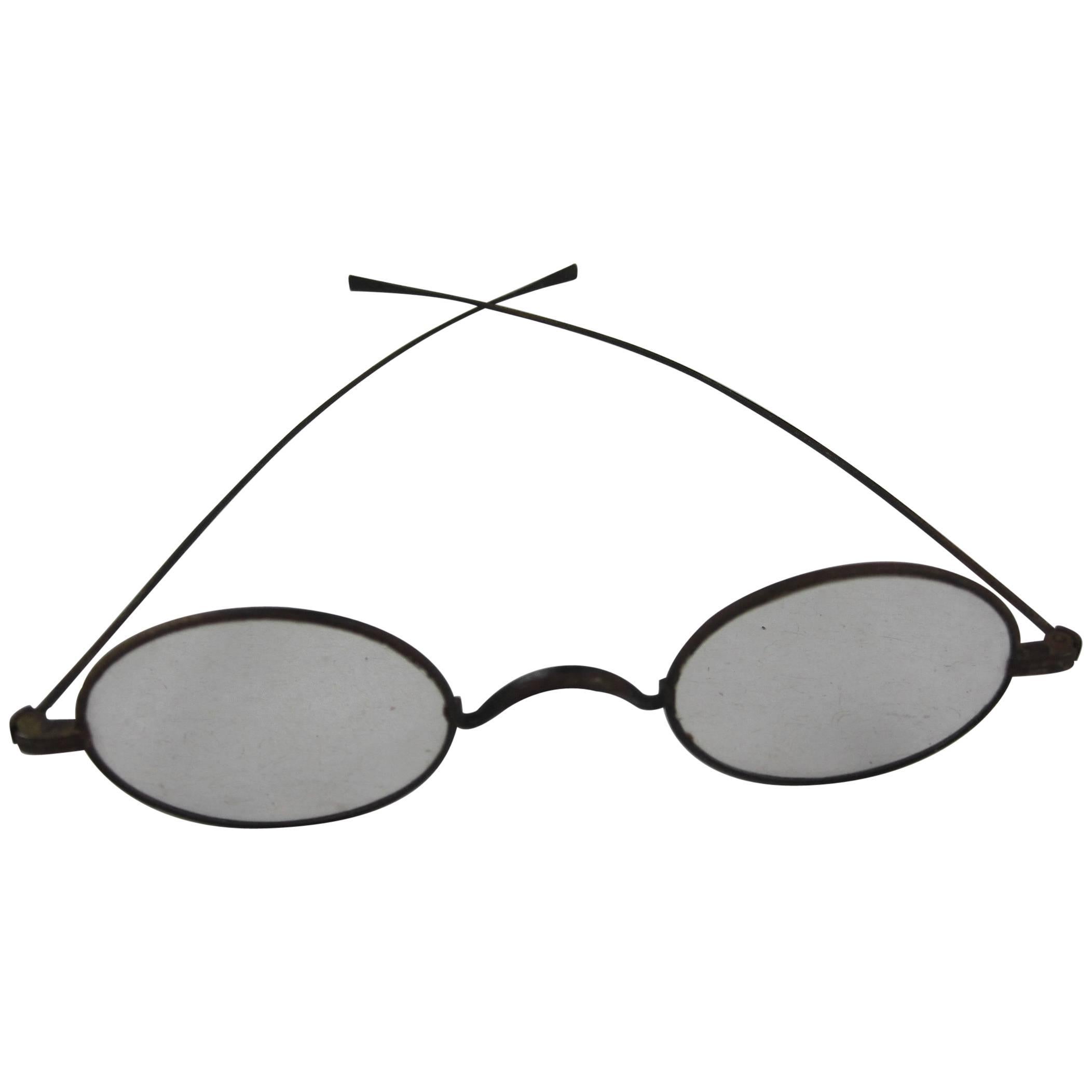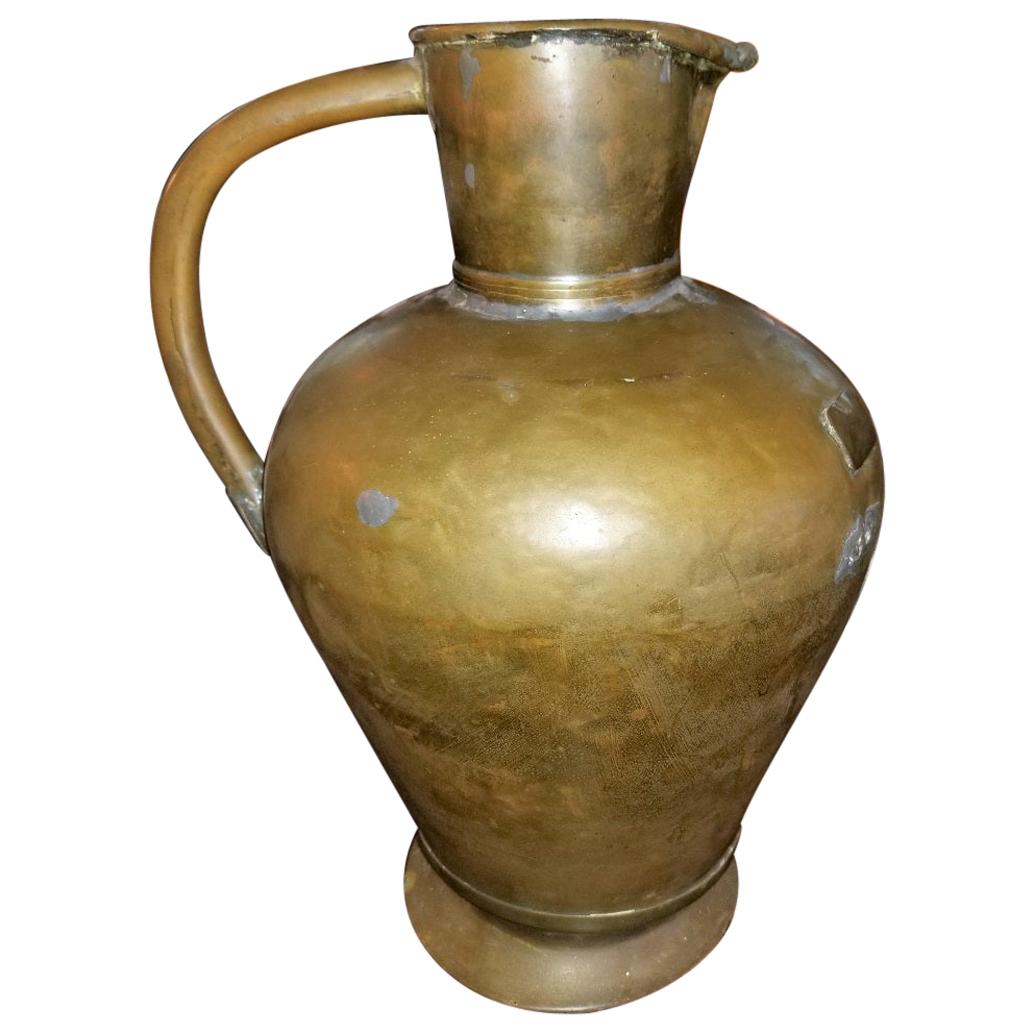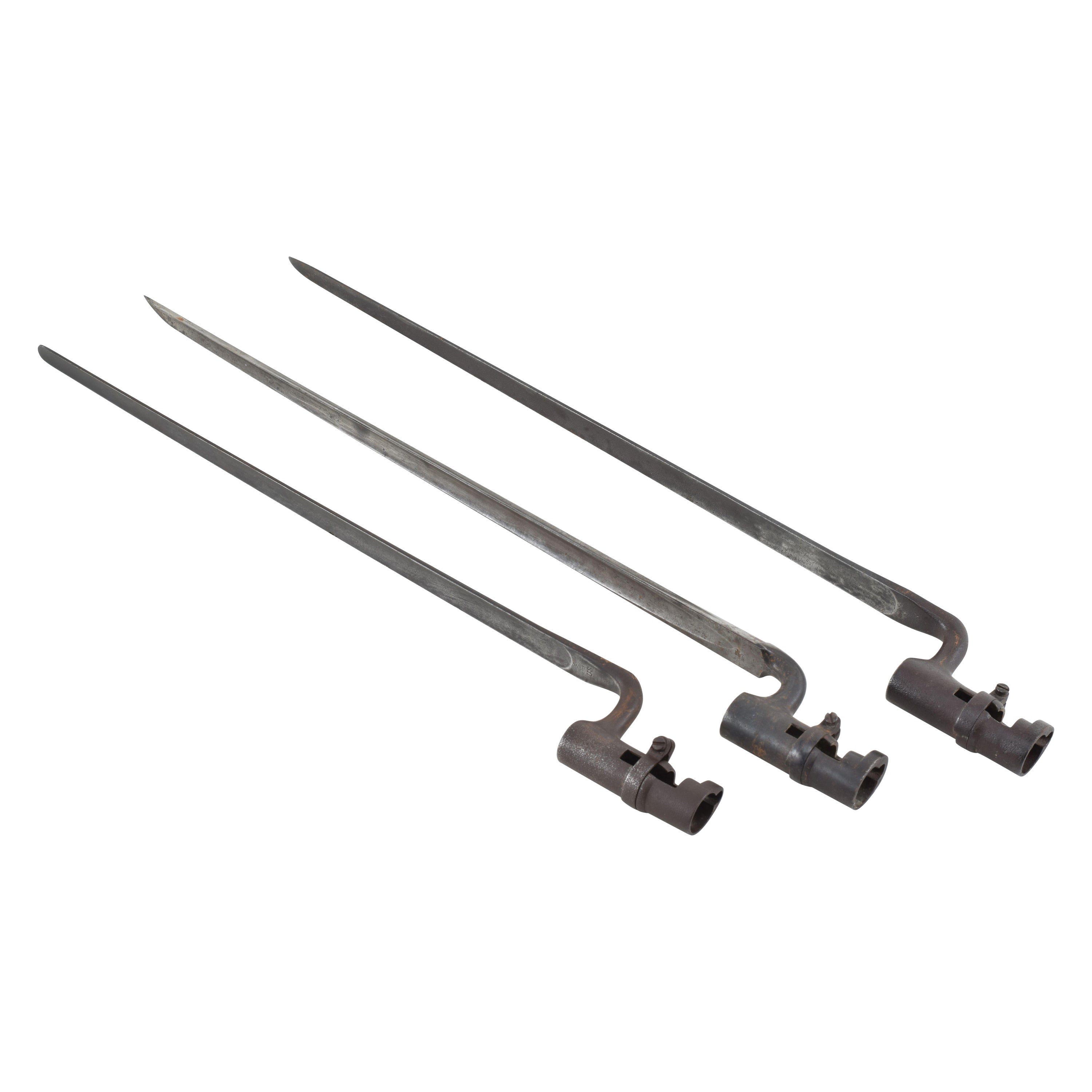Items Similar to Vintage Civil War Era Field Glasses by Queen & Co.
Want more images or videos?
Request additional images or videos from the seller
1 of 9
Vintage Civil War Era Field Glasses by Queen & Co.
About the Item
Presented is an original pair of Civil War-era field glasses. The glasses, an intricate example of brass and glass technology, were made in Philadelphia, Pennsylvania by the company Queen & Co. The glasses are stamped “Queen & Co., Phila” along the eyepiece. They are housed in the original leather hard case. The glasses were most likely made in the early 1860s.
Binoculars were first invented in France in the 1840s. They started small, primarily as opera glasses, but by the Civil War, they were being used in battle. Larger versions, like the pair seen here, became known as field glasses. Unlike Civil War uniforms or canteens, most field glasses were purchased privately by officers on both sides. Very few were issued by the Government and those carried either "U.S." or "C.S.A." imprints.
A Civil War officer or soldier would have used binoculars like these to sight locations and keep track of troop movements during battle. When not in use, they would have carried the glasses in the hard leather case, as seen here.
James W. Queen & Company was an optical and scientific instrument company located at 924 Chestnut Street, in Philadelphia, Pennsylvania. The company was active, in various forms, from 1853 to 1925. In 1853, James W. Queen began his small business in optical and philosophical apparatus, in the city of Philadelphia. In 1859, Samuel L. Fox joined the business and the business steadily developed under their tutelage. James Queen retired in 1870, yet Mr. Fox continued the business under the title of James W. Queen & Co, sometimes shortened to Queen & Co.
By 1888, the company had six departments: physical and chemical, engineering, ophthalmic, microscopical, magic lantern, photographic. Among the instruments and apparatus made were air pumps, astronomical instruments, induction coils, Holtz machines, gyroscopes, drawing and mathematical instruments, surveying instruments, and instruments for electrical measurements. In 1893, the company was incorporated, and the name changed to Queen & Co., Inc. In 1912 the company was reorganized as the Queen-Gray Co., Inc. by John G. Gray and continued as such until Gray's death in 1925, after which it became the Gray Instrument Company.
CONDITION:
The optics remain generally clear and the focusing mechanism still operates properly. The brass body displays some shallow dents and scratches commensurate with past use. Black eyepiece dented on one side. Green patina to the brass. Otherwise they are in very good condition.
With the original hard body, leather wrapped case. Case missing lid. Scratches to leather, but stitching remains stable and intact.
Dimensions: Glasses: 8 1/2" H x 4 1/2" W x 1 3/4" D. Glasses (extended): 11 1/4" H x 4 1/2" W x 1 3/4" D. Case: 8" H x 5 1/4" W x 2 1/4" D.
- Dimensions:Height: 11.25 in (28.58 cm)Width: 4.5 in (11.43 cm)Depth: 1.75 in (4.45 cm)
- Materials and Techniques:
- Place of Origin:
- Period:
- Date of Manufacture:1860s
- Condition:Wear consistent with age and use. Minor losses.
- Seller Location:Colorado Springs, CO
- Reference Number:
About the Seller
4.9
Platinum Seller
These expertly vetted sellers are 1stDibs' most experienced sellers and are rated highest by our customers.
Established in 2010
1stDibs seller since 2011
400 sales on 1stDibs
Typical response time: <1 hour
- ShippingRetrieving quote...Ships From: Colorado Springs, CO
- Return PolicyA return for this item may be initiated within 10 days of delivery.
More From This SellerView All
- Civil War-Era Side Drum, Made by George Kilbourn, 1859Located in Colorado Springs, COPresented is an original Civil War-era side drum with a pair of wooden drumsticks. This is a rope tension drum with a wooden body, ropes, and leather tabs. An iron tack pattern surro...Category
Antique 1850s American American Classical Musical Instruments
MaterialsIron
- "Army of the Potomac" by John Bachelder, Civil War Era Lithograph, circa 1863Located in Colorado Springs, COFully-entitled: Army of the Potomac. The Wagon Trains of the Army of the Potomac en Route from Chickahominy to James River VA. During the Seven...Category
Antique 19th Century American Prints
MaterialsPaper
- Civil War Panorama of the Seat of War by John Bachmann, Antique Print circa 1864Located in Colorado Springs, COPanorama of the seat of war. Bird's-eye View of Virginia, Maryland, Delaware and the District of Columbia. This third state of this fascinating bird's eye view of the northernmost p...Category
Antique 1860s American Maps
MaterialsPaper
- 34-Star Civil War American Flag, Antique Great Star Pattern, circa 1861Located in Colorado Springs, COThe stars of this extremely rare, Civil War-era flag are arranged in what is sometimes called the "Great Flower" pattern, a large star made out of smaller stars -- named as such beca...Category
Antique 1860s American Political and Patriotic Memorabilia
MaterialsLinen
- U.S. Navy League, "War Clouds Gather!" by Hazel Roberts, Vintage Poster, 1916Located in Colorado Springs, COThis propaganda poster was designed by Hazel Roberts (1883-1966) to encourage onlookers to join the U.S. Navy League. The poster was issued in 1916 and features a depiction of a Navy soldier facing the horizon and playing a bugle. The text at bottom reads "War Clouds Gather! Manhood willing but unarmed. Help the Navy-Join the Navy League/ Local Headquarters." The artist's signature from the lithograph...Category
Vintage 1910s American Historical Memorabilia
MaterialsPaper
- “House of Representatives & Civil Rights Bill” Wood Engraving by Harpers WeeklyLocated in Colorado Springs, COThis original wood engraving is titled “The Lobby of the House of Representatives at Washington During the Passage of the Civil Rights Bill.” ...Category
Antique 1860s Prints
MaterialsPaper
You May Also Like
- 36 Star American Flag, Civil War Era, Nevada StatehoodLocated in York County, PA36 Stars In The "Great Star" Or "Great Luminary" Pattern On A Civil War Era Flag With A Dusty Blue Canton And A Section Of One Stripe Souvenired, 1864-67, Nevada Statehood 36 star American national flag of the Civil War era, entirely hand-sewn and with some rare and beautiful features. The stars are arranged in a rendition of what is known as the Great Star or Great Luminary configuration, a large star made out of smaller stars. With no official star pattern before 1912, their design was left up to the artistic liberties of the flag-maker. Strikingly visual, the Great Star is both scarce and coveted by collectors. The 36th state, Nevada, entered the Union during the Civil War on October 31st, 1864. The last Confederate general surrendered on May 26th, 1865. The 36 star flag became official on July 4th of that year, but makers of printed flags would have begun adding a 36th star to their flags in 1864, even before the addition of the new state occurred. Lincoln pushed Nevada through just 8 days before the November election. Nevada’s wealth in silver was attractive to a nation struggling with the debts of war and increased support for the Republican ticket. The 36 star flag was replaced by the 37 star flag in 1867, with the addition of Nebraska. Adding to the flag's appeal is its small scale across those with of piece-and-sewn construction. During the 19th century, sewn flags (as opposed to those that were printed on cloth) were typically eight feet long and larger. This is because they were important in their function as signals, meaning that they needed to be seen and recognized from great distance. A flag that was six feet in length was considered small and production of flags smaller than this was extremely limited. Even infantry battle flags were approximately six by six and-one-half feet, about the size of an average quilt of the same period. As time passed, circumstances changed and sewn flags began to find more of a decorative purpose. Smaller flags are more scarce and far easier to frame and display. The Great Star configuration appears to have come about shortly after the War of 1812, when Congressman Peter Wendover of New York requested that Captain Samuel Reid, a War of 1812 naval hero, create a new design that would become the third official format of the Stars & Stripes. A recipient of the Congressional Medal of Honor, Reid became harbor master of New York following the war. During his lifetime, he created many innovations in signal use, including a system that could actually send messages from New York to New Orleans by sea in just two hours. Use as a Naval signal had been the primary reason for the initial creation of an American national flag in 1777, but since there was no official star design, the appearance of our flag varied greatly. Reid’s primary concern centered on both consistency and ease of recognition. His hope was as more and more states joined the Union and more and more stars were added to the flag, that it would remain easily identified on the open seas. In 1818, Reid suggested to Congress that the number of stripes permanently return to 13 (reduced from 15) and that the stars be grouped into the shape of one large star. Reid’s proposal would have kept the star constellation in roughly the same format, in a pattern that could be quickly identified through a spyglass as the number of states grew. His concept for the stripes was ultimately accepted, but his advice on the star pattern was rejected by President James Monroe, due to the increased cost of arranging the stars in what would become known as the “Great Star”, “Great Flower”, or “Great Luminary” pattern. Monroe probably didn’t wish to impose this cost on either the government or civilians, so he suggested a simple pattern of justified rows. Never-the-less, the Great Star was produced by anyone willing to make it and its rarity today, along with its beauty, has driven the desirability of American flags with this configuration. The canton and stripes of the flag are made of fine merino wool. Note how the canton has faded to a dusty seafoam blue, which is endearingly attractive. The stars of the flag are hand-sewn and single-appliquéd. This means that they were applied to one side of the canton, then the blue fabric was cut from behind each star, folded over, and under-hemmed, so that one star could be viewed on both sides of the flag. I always find single-appliquéd stars more interesting, not only because they are evidence of a more difficult level of seam-work and stitching, but also because they are more visually intriguing. The two visible rows of hand-stitching emphasize their hand-sewn construction, which is one reason why flags with single-appliquéd stars often appeal to connoisseurs of early American textiles...Category
Antique 1860s American Political and Patriotic Memorabilia
MaterialsWool
- Historical American Civil War Era Wire Frame Magnifying Eye Glass SpectaclesLocated in Philadelphia, PAA delicate pair of handmade magnifying wire rim eye glasses from the American Civil War era, circa 1860. A great looking historical conversation p...Category
Antique Mid-19th Century American American Classical Historical Memorabilia
MaterialsMetal
- 19th Century Large Civil War Era Bronze and Tin PitcherLocated in Dallas, TXPresenting a fabulous historic treasure of times past, namely, a 19th century large Civil War Era bronze and tin pitcher. From circa 1850, this is an American frontier piece. I...Category
Antique Mid-19th Century American American Classical Pitchers
MaterialsBrass, Bronze, Copper, Tin
- Civil War Socket BayonetsLocated in Norton, MAThree Socket Bayonets. One is a P-53 Civil War era marked "DEAKIN" and has a crown over 53, one is a "US" stamped dull tip, and the last is unmarked or stamped.Category
Antique 19th Century American Arms, Armor and Weapons
MaterialsMetal
- Patriotic Silk Kerchief w/ 34 Star Flags & an Image of Washington, Civil War EraLocated in York County, PAPATRIOTIC SILK KERCHIEF OF THE CIVIL WAR PERIOD, WITH AN ENGRAVED IMAGE OF GEORGE WASHINGTON, CROSSED 34 STAR FLAGS, AN EAGLE, AND "UNION FOREVER" SLOGAN: Patriotic kerchiefs that date prior to the 1876 Centennial of American Independence are rare among surviving 19th century textiles. Printed on silk and made during the opening years of the Civil War, this example consists of a white ground with red and blue borders. Inside is a prominent, copper engraved, device that consists of a large image of George Washington, crowned by a spread winged eagle that grasps a billowing streamer in its beak and talons. The ribbon boasts the Federal sentiment "Union Forever." The likeness of Washington is derived from Gilbert Stuart's Athenaeum portrait. Below this is a facsimile of Washington's signature, cradled by crossed American flags, each with 34 stars arranged in circular medallions. Although political textile historian Herbert Ridgway Collins associated this kerchief with the centennial of American independence,* there is overwhelming evidence that it was produced earlier. The large scale is much more indicative of kerchiefs produced in the 1860's and prior. Made of silk, the binding is hand-stitched, which is also common of those produced before 1876. When these facts are added to the pro-Union Civil War slogan and flags in the 34 star count, the combination of all these factors points firmly to Civil War period manufacture. Kansas was admitted into the Union as the 34th state on January 29th, 1861, about two-and-a-half months before the Confederate assault on Fort Sumter that marked the beginning of the Civil War. The 34th star was officially added on July 4th of that year and the star count remained official until July 4th, 1863. Further evidence can be found in an example of this kerchief that resides in the collection of the Adams County, Pennsylvania Historical Society, with firm provenance to a woman by the name of Emma Yount. The story goes like this: “With the Battle of Gettysburg looming and the countryside in turmoil, the Union cavalry rode into Gettysburg on the afternoon of June 30, 1863. The troopers dismounted and lounged in the town while awaiting further orders. During that time, the seven year old daughter of innkeeper Israel Yount, Emma, was playing outside their home when a cavalryman asked her to come and visit with him while he was resting. The cavalryman told her that he missed his young daughter at home and asked if little Emma would hug and kiss him on the cheek to remind him of his daughter, who he felt he might not ever see again. Emma asked her mother if she could do as the cavalryman suggested, and her mother considered the circumstances and allowed Emma to do so. Before leaving, the cavalryman gave young Emma a silk handkerchief he was carrying that featured George Washington's image and patriotic border and flags. Emma kept that handkerchief until her death in 1946 and it was then donated to the Adams County Historical Society.” The trio of brass rings, hand-sewn along the top edge, would have been added by a former owner so that it could be hung vertically. The textile itself is both beautiful in design and rare. Outside of an example pictured by Collins in his book “Threads of History” (Smithsonian Press, 1979), and the copy in the Adams County Historical Society, only three others like it are known to have surfaced, including this example. This condition is excellent for the period and it survives as an exceptional relic of the War Between the States. It is of interest to note that kerchief bears marked similarities to another, especially rare, pro-Union variety, that was produced in London for the American market. Notably larger in scale, but very much alike in terms of the fabric, the printing, the shades of red and blue, the verbiage, and the general overall graphic feel, it was produced by Foster & Porter, a known, English maker of printed kerchiefs. Instead of featuring George Washington, the imagery centers on a large cannon...Category
Antique 1860s American Political and Patriotic Memorabilia
MaterialsSilk
- Antique Civil War Era Leg Brace or Splint with Metal, Brass & Wood ConstructionLocated in Hamilton, OntarioThis antique Civil War era primitive leg brace or splint is unsigned, but presumed to have been made in the United States in circa 1860. The brac...Category
Antique Mid-19th Century American Primitive Historical Memorabilia
MaterialsBrass, Cut Steel
Recently Viewed
View AllMore Ways To Browse
Antique Vintage Pump
Antique Brass Pump
Brass Pump
Antique Induction Coil
Antique Scientific Apparatus
Case Electrical
Magic Lantern Antique
Small French Lantern
Used Ophthalmic Instruments
Antique Ophthalmic Instruments
Used Historical Memorabilia
Vintage Traffic Cones
Vintage Parade Saddles
Antique Bedpan
Antique Brass Cash Register
Knights Templar Collectables
Military Wicker Basket
Popcorn Machine





